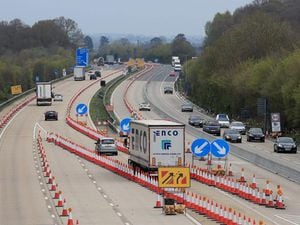Operation Brock to launch on Kent motorways as part of Brexit preparations
Measures to manage traffic on motorways in preparation for a no-deal Brexit will be activated on Monday.

The government is going ahead with its preparations for a no-deal Brexit by activating measures to manage traffic on Kent’s motorways despite the EU considering an extension.
Operation Brock will come into force at 6am on Monday – three days before the UK is due to withdraw from the EU and the day Parliament votes on whether to hold a snap general election.
It comes amid signs the EU is set to grant a fresh Brexit delay until the end of January after Boris Johnson was forced – under the terms of the so-called Benn Act – to request a further extension.
The traffic measures are designed to keep the M20 open in both directions in case there is a disruption to services across the English Channel.
Lorries heading for Europe will face a 30mph limit on a 13-mile stretch of the coastbound carriage of the M20.
All other traffic on the motorway – including lorries carrying out UK deliveries – must use a 50mph contraflow of two lanes in each direction on the London-bound side of the road.
Several holding areas to park lorries are also available to be activated if required, including at Manston Airfield.
Hauliers must be ready to show they have the correct paperwork before reaching the border or face being turned back.
Motorists have been warned to allow for extra travel time and to make sure they have food and water in their vehicles in case of delays.
Highways England south east operations director Nicola Bell said Operation Brock is part of a set of measures in place to allow the M20 and the rest of Kent to keep moving in the event of cross-channel disruption.
“We have worked extensively with our partners in Kent to ensure that the county is as prepared as possible for any disruption to cross-channel services,” she said in a statement.
Operation Brock was initially deployed on March 25, four days ahead of the first planned Brexit date.
It was deactivated about three weeks later following the delay to the UK’s withdrawal from the EU, but the steel barriers for the contraflow system and 50mph speed limit remain in place.





